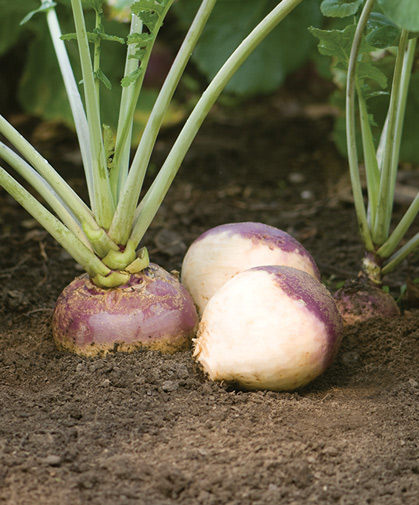Rutabaga - Key Growing Information

SCIENTIFIC NAME:
Brassica napusCULTURE:
Rutabagas prefer well-drained soils abundant in potash and phosphorus, with a pH range of 6.4-6.8. For customary fall and winter use, plant in late spring, early summer, or about 90 days before intended harvest. Sow 6 seeds per foot, 3/8" deep, thinning to 6" apart, in rows 18-24" apart.DISEASES:
Soft, brown interior root spot indicates soil boron deficiency, corrected by good compost or agricultural borax. Diseases include black leg, black rot, and turnip mosaic virus. Practice crop rotation (as with all Brassicas). Dispose of infected plants and do not allow any to survive the winter to infect a new crop.INSECT PESTS:
Protect from cabbage root maggots and flea beetles with floating row covers at time of planting.HARVEST AND STORAGE:
After at least two good frosts, cut tops and store washed or unwashed at 32°F (0°C) and 95% relative humidity for up to 6 months. Waxing (dipping clean roots in paraffin) is done prior to delivery to prevent drying of roots in store displays.AVG. DIRECT SEEDING RATE:
1M/166', 1 oz./1,400', 131M or 14¼ oz./acre at 6 seeds/ft. in rows 24" apart.SIZED SEEDS:
"Sized" seeds have been sorted so they are roughly the same size. This consistency allows for more accurate spacing with mechanical seeders and more even germination. Rutabaga seed is unsized, except when noted in the product description.SEED SPECS:
SEEDS/LB.: Avg. 168,700.PACKET:
100 seeds, sows 16'.

